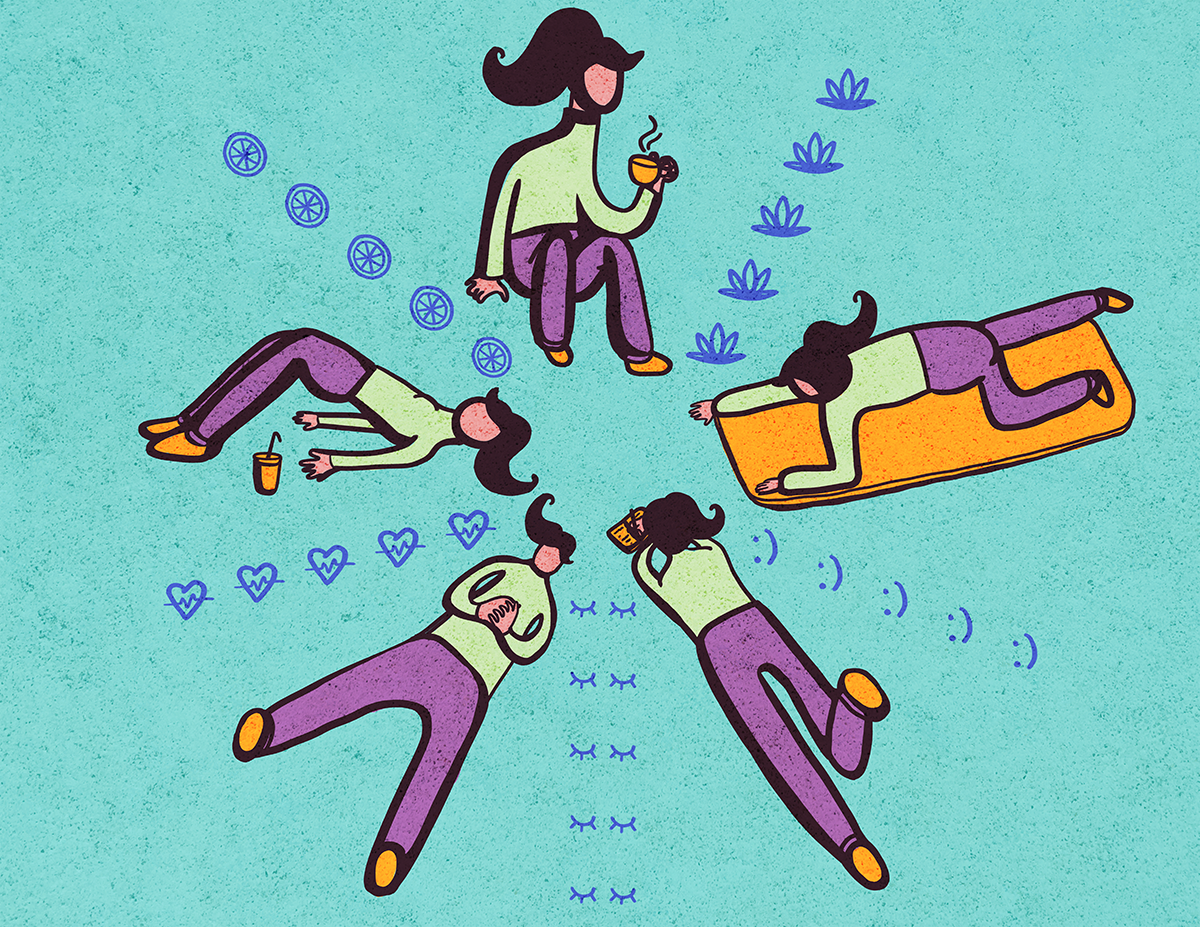The nefarious new inspiration porn
“That Girl” wakes up at 6 a.m. for her morning exercise of choice, often yoga, jogging, or weight lifting. Then when she’s done, she showers, performs an elaborate skincare routine, makes her white bed, meditates, drinks a yummy homemade smoothie, puts on some bike shorts and a crop top, and, if she has some time, writes in her gratitude journal.
“That Girl” is the latest internet lifestyle trend popularized on TikTok. Aimed at young women, this trend is supposed to encourage girls to be their healthiest, most productive, and #empowered selves — to become “That Girl” who is cool, skinny, and successful. The trend, like most things that live on the internet, has faced some criticism. So let’s unpack why “That Girl” is sort of problematic.
For starters, “That Girl” isn’t anything new. She’s the evolution of girls of the past like the #girlboss (popularized by Nasty Gal founder Sophia Amoruso). The #girlboss was simply a confident successful woman, particularly if she was an entrepreneur or her own boss. #Girlboss feminism was synonymous with pithy hashtags and sayings that you could slap onto a t-shirt, like #freethenipple and #girlssupportgirls. She has to operate in a “man’s world,” and so she’s encouraged to take charge, be unapologetic, and hustle. This brand of feminism was particularly championed by millennial women, has been accused of being superficial, promoting patriarchal capitalist attitudes and structures, and focusing on skinny, white, conventionally attractive cis-het women.
This leads us to one of the biggest pitfalls of both the #girlboss and “That Girl.” They’re not inclusive. Like at all. If you look up “That Girl” on TikTok or YouTube, you’ll see the same kind of girl participating.
- She has disposable income. Those fancy salads, candles, journals, and gym memberships aren’t cheap!
- She’s usually thin, white, and cis-het. And if she’s not all of those things, don’t worry. She’s still conventionally attractive!
On the surface, this isn’t so nefarious. Sometimes certain trends and lifestyles just happen to appeal to a certain demographic, right? But this lack of diversity becomes more troubling when you consider that “That Girl” carries connotations of moral virtue.
Throughout history and across cultures, religions, and philosophies, self-control has been valued. You see it in the writings of influential thinkers, including Plato, St. Thomas Aquinas, Confucius, and the Buddha. Asceticism is the practice of denying your desires in order to achieve a certain goal and traces of it can be seen in most major religions, including Christianity, Islam, and Buddism. Denial of food, sex, comfort, luxury, or even sleep are all seen as admirable sacrifices to achieve moral and spiritual purity, common ascetic practices include celibacy, fasting, and meditation. Ascetics, or those who successfully complete an ascetic practice are more moral than everyone else because they have overcome “temptation.”
Capitalism has a bit of asceticism in its DNA, maybe because of its links to Christianity. Though capitalism loves excess it’s quite strict. Give up sleep, give up a social life, give up being treated like a person… whatever it takes to be successful. Don’t get distracted by your desires and weaknesses, just focus. Anyone can be successful through hard work. If you’re poor, it’s your own fault. You should suck it up and hustle, to the point of exhaustion or even injury if necessary. Sacrifice and discipline is just what it takes to be a “good” and “successful” person in our society. This mentality doesn’t only apply to one’s career and finances, it also applies to health and fitness. Overweight people are shamed for supposedly being indulgent, lazy, stupid. There is no consideration for genetics, lack of resources, or other health problems. Culturally, thinness has long been associated with virtue, and fatness has been associated with decadence and failure.
Ascetics, thin people, the traditionally successful, and “That Girl” have all denied human desires in order to be superior.
“That Girl” is just a new form of the centuries long human desire to feel in control through self-discipline and strict routines. You can’t control the plague, earthquakes, famines, oppressive leaders, or the family you’re born into, but you can control what you eat, when you wake up, if you exercise or meditate, etc. But it’s a cycle of shame, guilt, and self-hatred when you “fail.” The trend serves capitalism, both with the luxurious lifestyle it worships and the attitude it embodies.
In all fairness, I do see value in these attempts to “romanticize your life,” enjoy the little things, touch grass, and be mindful. The trend also professes the importance of mental health, albeit in the most superficial, aesthetic, and pleasant way possible. “That Girl” does not go to therapy or need medication, she takes a bubble bath, puts on a face mask, watches only one episode of Friends, bakes… This self-care trend encourages you to spend money on certain products and is incredibly individualistic. If you are burnt out and depressed it’s your fault, not any system’s. Haven’t you been practicing self-care?
I urge you to aspire for something, anything more fulfilling and genuine than “That Girl.” Trust me, she’s not all that.
Feature graphic by Madeline Schmidt
